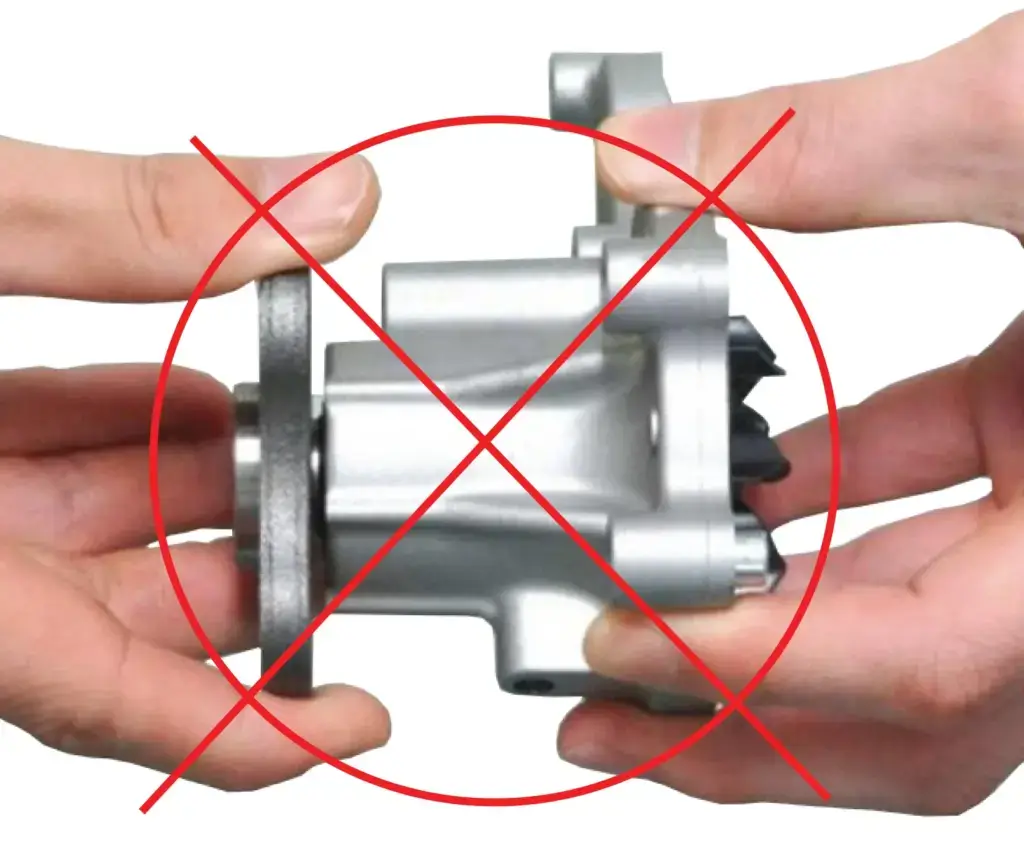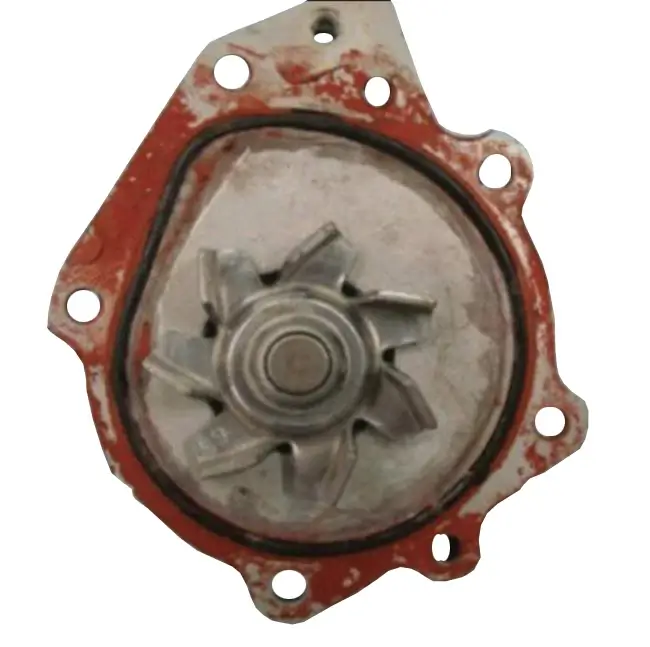Steps to replace a water pump
How to replace a water pump
Replacing a water pump is fairly easy if it’s accessible. But there are a few things to keep in mind when replacing a water pump.
Never rotate a dry water pump
It seems like everyone wants to test a new water pump by rotating the pump shaft right out of the box. DON’T DO IT! Rotating a dry water pump can damage the seals. They’re designed to run in coolant and can’t handle dry rotate.
 Flush radiator and cooling system before removing the old pump
Flush radiator and cooling system before removing the old pump
This is a critical step. You don’t want to expose the seals on the new pump to grit and contaminated coolant.
Remove the old water pump and inspect for missing parts
Check the cooling passages for any broken impeller parts
Clean the mounting surface and remove all old gasket material
Use spray gasket remover if the old gasket doesn’t release easily. Avoid gouging the mounting surface with razor blades or
Apply gasket sealer only if specified
Some water pumps come with a rubber seal. Some water pump gaskets come with a rubber seal. DO NOT APPLY any type of RTV or gasket sealer on rubber seals unless directed to in the instructions. Applying RTV or gasket sealer to a rubber seal can cause that seal to leak!
Install new water pump and tighten mounting bolts
It’s easy to strip or break water pump bolts, so use a torque wrench and tighten the bolts in a criss-cross pattern.
Install belt on water pump pulley, adjust tension
If your engine has an automatic belt tensioner, check the tensioner for signs of binding, rust or noise. If the auto tensioner has more than 100K miles on it, replace it and the belt.
If the water pump has a manual tensioner adjuster, tighten the belt until it has approximately 1/2″ belt movement in the middle section of the belt.
Refill radiator and coolant reservoir with the recommended coolant (not universal coolant)
The carmaker knows which metals, seals, gaskets, plastics and rubber components are used in their engine. No universal coolant can be compatible with all those materials.
Bleed air out of the system
Follow the air bleeding procedure for your engine.
Start the engine and check for leaks
Let the engine warm up to full operating temperature and check for leaks around the water pump and hoses.
©, 2023 Rick Muscoplat
Posted on by Rick Muscoplat

